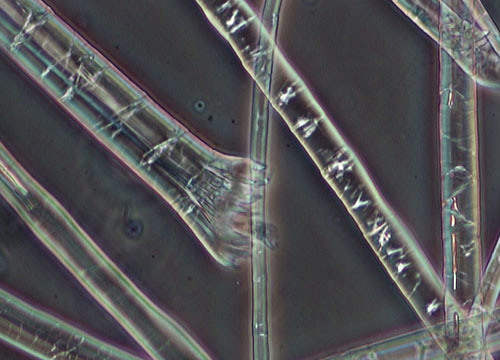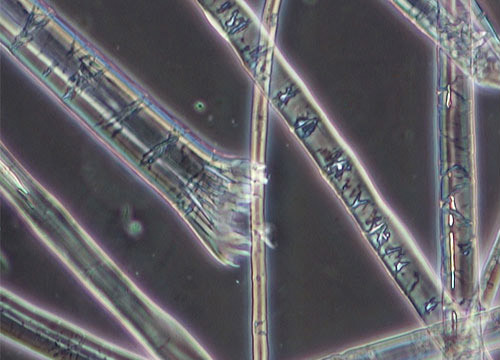Ramie Fibers
The long, glossy ramie fibers are naturally white and have an almost silky appearance. Ramie is a cellulosic substance as is cotton, linen and other plant fibers. The inner structure of ramie, however, differs from the other plant fibers that contain polymeric carbohydrate structural components. The physical form of the cellulose in the Ramie fiber is very rigid and crystalline but is extremely porous, which provides it with better absorbency than many other cellulose fibers. One of the strongest natural fibers, ramie exhibits even greater strength when wet.
 Negative
Negative
 Positive
Positive
Positive
The long, glossy ramie fibers are naturally white and have an almost silky appearance. Ramie is a cellulosic substance as is cotton, linen and other plant fibers. The inner structure of ramie, however, differs from the other plant fibers that contain polymeric carbohydrate structural components. The physical form of the cellulose in the Ramie fiber is very rigid and crystalline but is extremely porous, which provides it with better absorbency than many other cellulose fibers. One of the strongest natural fibers, ramie exhibits even greater strength when wet.
Negative
Often mistaken for linen because of the unevenness in the fiber, ramie is frequently found in modern textiles. China is still one of the leading producers, but faces competition from Taiwan, Korea, the Philippines and Brazil. When incorporated into fabric alone, ramie is extremely absorbent, dries quickly, resists shrinkage, and is unusually resilient against mildew, mold, and insect attacks. Yet, its poor elasticity and brittleness make it better suited for fabric blends. Added to cotton, for instance, ramie increases strength, color, and luster without overly degrading the flexibility of the fabric. Therefore, vegetable fiber is frequently a component in cotton knit sweaters. Besides apparel, ramie can also be found in fish netting, canvas, straw hats, upholstery, and fire hose.













